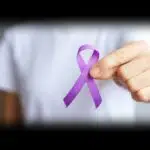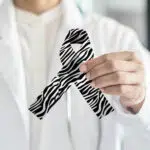Testicular Cancer Awareness Week is observed from April 1 to 7 every year to raise awareness about testicular cancer and educate young men about early detection and treatment. Did you know that the cure for testicular cancer was developed in 1974, close to 50 years ago? Testicular cancer is a form of cancer that occurs in a part of the male reproductive system, the testicles. Its symptoms include a lump in the testicle or swelling or pain in the scrotum. Testicular cancer mainly develops in young men between 20-35 years old. This form of cancer is highly treatable and curable, with a 90% chance of success if detected early.
History of Testicular Cancer Awareness Week
The earliest mentions of cancer were found in the “Edwin Smith Papyrus,” dating back to about 1600 B.C. The manuscript detailed cases of tumors or ulcers of the breast and how they were treated by cauterization, but the word ‘cancer’ was not used.
Between 460 — 370 B.C., it was Hippocrates who first referred to the disease using the term ‘carcinos’ and ‘carcinoma,’ which means ‘crab’ or ‘crayfish’ in Greek. Hippocrates used these terms because of the “finger-like spreading projections from cancer called to mind the shape of a crab.” Celsus (28 B.C. — 50 A.D.), a Roman physician, later translated carcinos into the Latin word for crab or crayfish — cancer. Reserving the word ‘carcinos’ for malignant tumors, the Greek physician Galen instead used ‘oncos’ to refer to all tumors. It was from this word that the word ‘oncology’ was derived.
As the populace generally accepted the practice of medically dissecting human bodies in the 16th and 17th centuries, various scientists began making discoveries into the causes of cancer. The Scottish surgeon John Hunter was the first to suggest that some cancers might be cured by surgery. In 1775, the British surgeon Percivall Pott identified the first cause of cancer.
In 1913, the American Cancer Society was founded in New York City by 15 physicians and businessmen. Fifty-eight years later, the United States declared war on cancer by introducing the National Cancer Act of 1971.
In 1973, a medical oncologist at Indiana University, Lawrence H. Einhorn, tested and discovered the cure for testicular cancer. This remarkable achievement was followed by the development of a nerve-sparing surgical technique by Dr. Donohue in the 1980s. The method allowed diagnosed men to maintain quality of life and, often, their reproductive capabilities.
Testicular Cancer Awareness Week timeline
The ancient Egyptian physicians treat cases of breast tumors by cauterization.
Celsus translates ‘carcinos’ (the former name of the disease) into ‘cancer,’ the Latin word for crab or crayfish.
The British surgeon Percivall Pott demonstrates how environmental carcinogen causes testicular cancer.
Lawrence H. Einhorn tests and discovers the cure for testicular cancer.
Testicular Cancer Awareness Week FAQs
What color ribbon is worn for testicular cancer?
The ribbon colors officially recognized globally for testicular cancer awareness are orchid, purple, and violet.
What are the five warning signs of testicular cancer?
The warning signs of testicular cancer include a painless lump or swelling on either testicle, dull ache in the lower abdomen or groin, buildup of fluid in the scrotum, feeling of heaviness in the scrotum, swelling of one or both legs, and lower back pain or shortness of breath.
Can you live a normal life after testicular cancer?
It is highly possible to live a normal life after testicular cancer if the proper medical team is in place. The team would help you create a survivorship care plan and treatments and diet to prevent cancer from developing again.
How to Observe Testicular Cancer Awareness Week
Check yourself
The best thing you can do during Testicular Cancer Awareness Week if you are a man, especially between the ages of 15 to 35, is to examine yourself for changes in your testicles. You can check yourself by feeling each of your testicles using both hands, rolling the testicles between your thumb and fingers for inspection, and feeling them for lumps, bumps, and changes in size.
Support testicular cancer research
Testicular cancer research allows medical professionals to discover the causes of testicular cancer and develop an effective treatment for the disease. You can support this cause and help increase the testicular cancer survival rate by donating 10 to 100 dollars to a reputable cancer research facility. You can also organize fundraising for cancer research at your school or workplace.
Educate young men about testicular cancer
If you are knowledgeable about testicular cancer, you can use Testicular Cancer Awareness Week to educate men around you about the disease. That can be at your workplace, school, or using your social media platform. If you are a charitable organization, you can organize a week-long awareness campaign either physically or online to educate young men in your community about the signs and symptoms of testicular cancer and how they can detect it early.
5 Mind-blowing Facts About Testicular Cancer
It’s found primarily in young men
Testicular cancer is most common in young men between the ages of 15 to 35 years.
It’s discovered mainly through self-examination
Regularly examining your testicles for any lumps, nodules, or changes is one of the most effective ways to discover testicular cancer.
Testicular cancer has two main types
The main types of testicular cancer are seminoma and nonseminoma.
Surgery is usually the first treatment option
The patient first undergoes surgery to remove the cancerous cells and the testicle.
It has a high survival rate
In the U.S., 95% of men who detected testicular cancer early in its development have a high chance of living five years past their diagnosis.
Why Testicular Cancer Awareness Week is Important
It increases the testicular cancer survival rate
Testicular Cancer Awareness Week provides an opportunity for medical professionals and interested parties to sensitize men on testicular cancer, including the signs and symptoms and how to self-examine themselves. These allow men to detect testicular cancer early, thereby increasing their chances of surviving the disease.
It promotes healthier lifestyle choices
While the leading causes of testicular cancer are still largely unknown, some risk factors are associated with the disease. Knowing the right lifestyle choices to make can help reduce the risk of testicular cancer.
It’s a week of solidarity
This week allows people to show comradeship to young men going through a case of testicular cancer or experiencing the outcome of testicular cancer. People can show solidarity by wearing the purple testicular cancer ribbon or t-shirts or celebrating their courage on social media.
Testicular Cancer Awareness Week dates
| Year | Date | Day |
|---|---|---|
| 2026 | April 1–7 | Wednesday–Tuesday |
| 2027 | April 1–7 | Thursday–Wednesday |
| 2028 | April 1–7 | Saturday–Friday |
| 2029 | April 1–7 | Sunday–Saturday |
| 2030 | April 1–7 | Monday–Sunday |



















































































































































